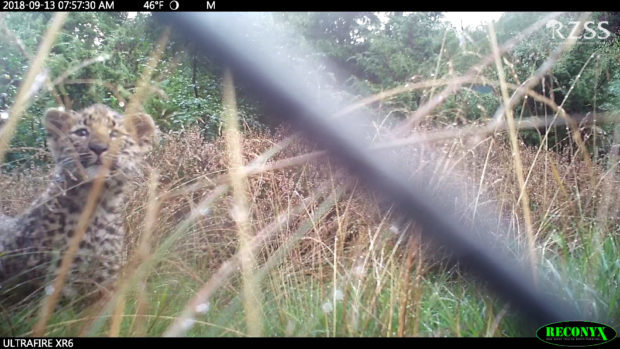New footage has shown that two of the rarest cats in the world have been born at the Highland Wildlife Park.
The Royal Zoological Society of Scotland, which runs the park, announced in July that its Amur leopard Arina had given birth but with human presence kept to a minimum, the number of cubs born was unknown.
Motion sensitive cameras have now shown that two cubs have emerged from their den deep within undergrowth.
At least one of the cubs may be released into the wild in Russia in the future.
Douglas Richardson, head of living collections at the park, at Kincraig, near Kingussie, said: “We are delighted that Arina has two cubs, with both appearing to be strong and healthy.
“Our Amur leopard habitat is the only one within the zoo community which has been designed to breed these extremely rare cats with the aim of producing cubs that are eligible for reintroduction to the wild.
“While this would be incredibly complex, it would also be a world first and a huge step forward in the conservation of this critically endangered cat.”
Funded by an anonymous donation, the park’s Amur leopard habitat is not on view to the public, which helps ensure the cubs retain their wild instincts and behaviour.
Freddo, the father, came from Tallinn Zoo in Estonia, while Arina was born at Twycross Zoo in the Midlands. Both leopards arrived at the park in 2016.
Although progress has been made in recent years, habitat loss, poaching and conflict with humans remain threats to the Amur leopard, with only around 100 remaining in the wild.
It is hoped that cubs born at the wildlife park can be released into a region north-east of Vladivostok in the Russian far east, part of the Amur leopard’s historic wild range.
The cubs, now three months old, will be named when their sex is known.










